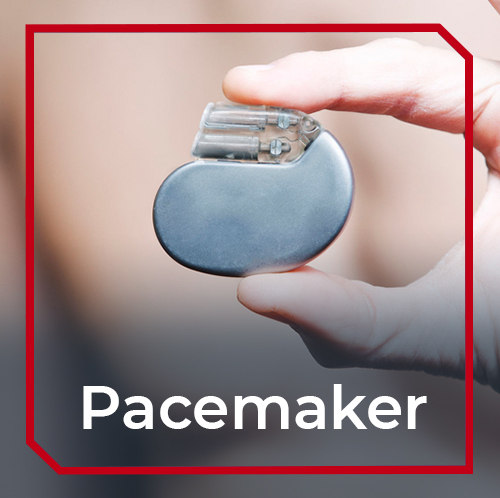What is a pacemaker?

What is a pacemaker?
A pacemaker is a small device that is implanted underneath the skin to help keep track of- and control your heartbeat. It is used on people with an irregular heart rhythm, often caused by problems in the cardiac conduction system or heart failure. A pacemaker tracks and adjusts the heart rhythm. The device consists of a small box and one or two wires. In the metal box there is a small chip and a battery that powers the device and has a life span of many years.
When will you receive a pacemaker?
- In case of bradycardia, a heartbeat that is too slow.
- In case of tachycardia, a heartbeat that is too fast.
- If your heart doesn’t beat regularly
Placement
During surgery a small incision, approximately 5 cm or 2 inches long, is made on your chest underneath your collarbone. The device is implanted at this location underneath the skin and the wires are led through a vein to the heart. Small electric pulses, that you won’t be able to feel, are sent through the wire to your heart when needed.
CRT-P
A CRT-pacemaker is a version of a pacemaker, which besides treating an irregular heartbeat also sends small electric pulses to your left and right ventricles to help your heart pump more efficiently.
Read more:
What is the difference between a pacemaker and an ICD?
Vital Beat offers special protection wear for you and your device. You can read more about these products by clicking the button below.
